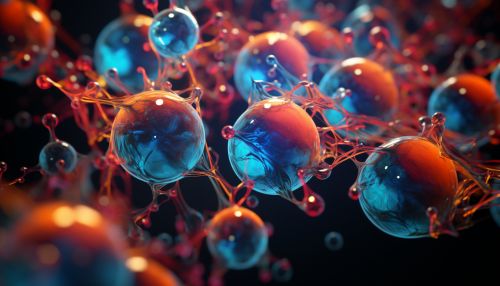Mechanisms of Microbial Methanogenesis in Anaerobic Environments
Introduction
Methanogenesis is a unique metabolic process carried out by a group of strictly anaerobic archaeal microorganisms, known as methanogens. This process involves the production of methane (CH4) as a metabolic byproduct. Methanogenesis is a crucial part of the global carbon cycle, contributing significantly to the global warming potential due to the high heat-trapping capacity of methane.


Biochemistry of Methanogenesis
Methanogenesis is a form of anaerobic respiration where carbon dioxide (CO2), acetate, or other simple organic compounds serve as terminal electron acceptors, instead of oxygen as in aerobic respiration. Methanogens use a variety of unique coenzymes and cofactors, such as coenzyme M (CoM), coenzyme B (CoB), methanofuran, and factor F430, which are not found in other organisms.
Substrate Utilization
Methanogens can use a range of substrates for methanogenesis, including hydrogen (H2), carbon dioxide (CO2), formate (HCOO−), acetate (CH3COO−), methanol (CH3OH), and methylamines. The type of substrate used depends on the species of methanogen and the environmental conditions.
Methanogenesis Pathways
There are three primary pathways of methanogenesis: hydrogenotrophic, acetoclastic, and methylotrophic. Hydrogenotrophic methanogenesis involves the reduction of carbon dioxide to methane using hydrogen as an electron donor. Acetoclastic methanogenesis involves the cleavage of acetate into methane and carbon dioxide. Methylotrophic methanogenesis involves the reduction of methylated compounds to methane.
Microbial Ecology of Methanogenesis
Methanogens are found in a variety of anaerobic environments, including wetlands, rice paddies, the digestive tracts of ruminants and termites, and anaerobic wastewater treatment systems. They play a key role in the degradation of organic matter in these environments.
Syntrophy
Methanogens often exist in a syntrophic relationship with other microorganisms, such as fermentative bacteria. These bacteria break down complex organic compounds into simpler compounds, such as hydrogen and acetate, which can be used by methanogens. This relationship is mutually beneficial, as the methanogens remove these products, preventing their accumulation and allowing the fermentative bacteria to continue their metabolism.
Competition and Inhibition
Methanogens face competition from other groups of microorganisms, such as sulfate-reducing bacteria and acetogenic bacteria, which can also use hydrogen and acetate. The presence of alternative electron acceptors, such as sulfate and nitrate, can inhibit methanogenesis.
Environmental Impact of Methanogenesis
Methanogenesis contributes significantly to the global methane budget. Methane is a potent greenhouse gas, with a global warming potential 25 times greater than that of carbon dioxide over a 100-year period. Methanogenesis in natural and man-made environments, such as wetlands and rice paddies, is a major source of atmospheric methane.
Climate Change
Methanogenesis is a significant contributor to climate change due to the high global warming potential of methane. Changes in land use, such as the expansion of rice cultivation and the increase in ruminant livestock farming, have led to an increase in methanogenesis and consequently, atmospheric methane levels.
Biogeochemical Cycling
Methanogenesis plays a crucial role in the global carbon cycle by recycling carbon from organic matter back into the atmosphere as methane. It also contributes to the cycling of other elements, such as sulfur and nitrogen, through interactions with other groups of microorganisms.
Methanogenesis in Biotechnology
Methanogenesis has important applications in biotechnology, particularly in the field of waste treatment and bioenergy production.
Anaerobic Digestion
Methanogenesis is a key process in anaerobic digestion, a technology used for the treatment of organic waste and wastewater. Methanogens convert the organic matter in the waste into methane, which can be captured and used as a renewable energy source.
Bioenergy Production
Methane produced by methanogenesis can be used as a biofuel. It can be burned to generate heat and electricity, or it can be upgraded to biomethane, a renewable substitute for natural gas.
